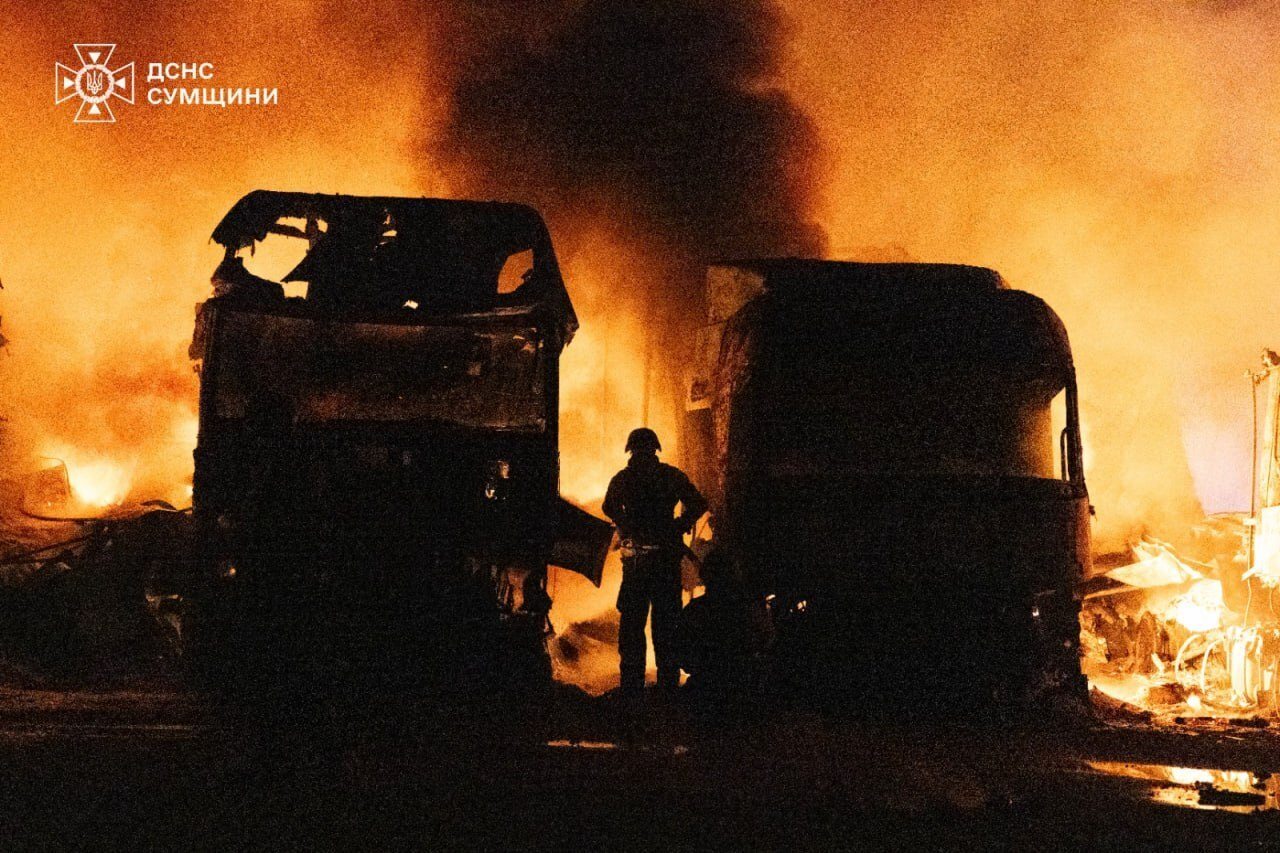Russia and Ukraine Pummel Each Other’s Energy Infrastructure

Published by The Lawfare Institute
in Cooperation With

The buzzing of generators is back on the streets of Kyiv, which can mean only one thing: Russia’s annual campaign to destroy Ukraine’s energy system has begun yet again.
Although Moscow has tried, and mostly failed, to plunge Ukraine into darkness every cold season, the coming winter may prove more difficult for Ukraine than ever. Russia now has greater quantities of better weapons and is attacking not only Ukraine’s electricity generation but its natural gas production, too—methodically targeting the most vulnerable regions.
This time, however, there are important differences on both sides of the border: Ukraine is responding with a campaign of its own, striking energy sites deep into Russian territory—as far as 1,200 miles—thereby forcing Moscow to curtail some exports and ration fuel internally.
The long-term effects of both campaigns will depend on how long each side can sustain its attacks and how much strategic damage it can do.
Ukraine’s Battered Energy System
Half of Ukraine’s energy comes from three of its functioning nuclear power plants (NPPs), which are located in the Rivne, Kmelnytskyi, and Mykolaiv regions. Ukraine’s fourth NPP —the largest one in Europe —is located in the Zaporizhzhia region and has been controlled by Russia since 2022. Currently, all of the Zaporizhzhia NPP’s reactors are shut down and not generating any electricity.
Given that nuclear power generation can’t be ramped up or down quickly, the NPPs provide a stable base-load supply of electricity, the minimum amount necessary to keep the grid running round-the-clock.
They are supplemented mainly by thermal power plants and thermal combined heat and power plants, which burn coal and natural gas to generate electricity and heat; as well as hydroelectric power plants, which use water from the Dnipro and Dniester rivers; and, lastly, a small amount of renewables. These types of energy generation are a lot more flexible and can easily be ramped up to meet spikes in demand during the day.
Before 2022, Ukraine had a power generation capacity of around 38 gigawatts. After a number of power plants were destroyed, damaged, or occupied, the number fell by more than half to around 18 gigawatts. That is just enough for the demands of the cold season, but in the face of ongoing Russian attacks, meeting that target is a continuous effort.
From the power plants, the energy flows through transmission lines to regional and local substations, which then distribute it to consumers. These have been prime targets for Russia, and to protect them, Ukraine has been building three-level protective structures with sand-filled gabions, metal, and concrete.
A key part of keeping the energy grid operational is maintaining its equilibrium, which means constantly matching the supply of electricity to the demand to avoid dangerous fluctuations in frequency. If demand suddenly exceeds the supply—for example, because of an attack that renders parts of the system nonoperational—the grid’s operators will institute localized power outages to get back to that equilibrium. These outages last as long as necessary to repair the damage.
This is ultimately done to avoid the nightmare scenario, which is also Russia’s aim: the system’s cascading failure, commonly known as a blackout, when the supply of energy and electrical frequency drops too much and too quickly, forcing power plants across the country to automatically go offline in a domino-like effect.
Russia succeeded in causing such a scenario only once, in November 2022, when a mass missile strike on substations and high-voltage transmission lines dropped the electric frequency low enough to force all Ukrainian NPPs into an emergency shut-off for the first time in history, effectively plunging much of the country into darkness for at least 12 hours.
Although Russia is unlikely to hit a nuclear plant directly, a strike that could cause a Chernobyl-type disaster, it will undoubtedly try to shut down the NPPs again by attacking the surrounding infrastructure. A Russian attack on Oct. 30 has already damaged substations powering the NPPs, with plants in Kmelnytskyi and Mykolaiv losing access to one of their power lines, and forcing the plant in Rivne to temporarily reduce the power of two of its units.
Russia targeted the substations that power nuclear plants once again on Nov. 8. That same attack also damaged two thermal power plants in Kyiv and Kharkiv.
New Russian Tactics
This year’s Russian campaign against Ukrainian energy infrastructure escalated in early fall, with the United Nations reporting 31 attacks on energy sites in September alone. Rolling power outages are now back in all Ukrainian regions, some lasting as long as 14 hours a day.
Moscow has been trying to knock out Ukraine’s energy system every year, intensifying attacks as soon as temperatures begin to plunge in hopes of plunging Ukraine’s morale along with them. The effort has failed so far: The energy system, though battered, proved resilient enough to avoid large-scale disasters, and the society adapted by stocking up on power banks, portable batteries, and generators.
This year feels different. One reason is Russia’s improved tactics and the sheer number of weapons now at its disposal. Over the summer, Russia continuously attacked Ukraine with anywhere between 300 and 800 drones per night—astonishingly high numbers compared to previous years, when around 100 drones were the norm.
The drones themselves have gotten better, too: faster, more lethal, and harder to jam and intercept. Some Russian drones have recently begun flying at higher altitudes, beyond the reach of the machine guns used by Ukrainian air defense units. The drones then dive onto the target in a fashion somewhat similar to the trajectory of a ballistic missile, which makes it a lot more difficult to take countermeasures. Russia can send dozens or hundreds of such drones at a single target, overwhelming Ukrainian air defenses.
Russia has also changed its overall strategy. Instead of relying on mass attacks that strike energy sites all across the country at once, it is now trying to knock out Ukraine’s energy sector region by region, focusing on the most vulnerable areas near the Russian border, like the regions of Sumy and Chernihiv, and those near the front line, like Kharkiv, Dnipropetrovsk, Donetsk, and Zaporizhzhia.
The apparent goal is to split the country in half: knock out all the infrastructure in the east, thus overloading the demand from the west, while also striking the transmission lines that run between them.
Another reason for worry is Russia’s unprecedented attempt to wipe out Ukrainian natural gas infrastructure.
Gas plays an outsized role in Ukraine’s centralized heating system, which mainly consists of municipal boiler houses that burn natural gas to make hot water and steam, which then flow through pipes to local households and public infrastructure. Thermal combined heat and power plants, which make both electricity and steam, rely primarily on natural gas.
In other words, a shortage of gas may mean colder apartments—a serious problem during a Ukrainian winter when temperatures usually stay below freezing for weeks at a time.
Russia has attacked some Ukrainian gas sites before, but never on this year’s scale.
A Russian strike on Oct. 3 took out 60 percent of Ukraine’s gas production capacity, anonymous sources told Bloomberg. Ukraine’s state-owned oil and gas company, Naftogaz, said its sites were hit seven times in October alone.
Meeting the Threat
As a result of Russian attacks, Ukraine is investing in alternative sources of power and stocking up various backup equipment, coal, and gas, spending at least $2,5 billion on gas imports to get through the winter.
The country is also building up energy storage capacity through projects like the top-secret battery parks—rows of large batteries that can power roughly 600,000 homes for two hours, according to the Wall Street Journal. There are now reportedly six of them in Kyiv and Dnipropetrovsk.
“A whole network of co-generation plants or modern modular boiler rooms and heat sources has been installed,” said Roman Nitsovych, a senior analyst at a Ukrainian energy-focused think tank DiXi. “More than a gigawatt of distributed gas generation has been built. And at least another 600 MW is under construction.” He said enhancing air defense capabilities remained Ukraine’s top priority.
The Russians “are counting on shaking up (the Ukrainian) society from within,” Nitsovych said. “Their strikes are also accompanied by a series of special information operations, claiming, for example, that we are not ready for winter, or that we have sold all electricity to the West.” Ukraine exports some electricity to its neighbors during stable months.
“The forecasts are not the best, but the situation is far from as catastrophic as Russian propaganda tries to portray it,” Nitsovych added.
Ukraine’s Deep Strike Campaign Against Russia
Another thing that makes this winter different is that this episode of the energy war has been a two-way street, with Kyiv carrying out its own aerial campaign against Moscow’s energy infrastructure.
Between August and October, Ukraine launched more than 60 attacks into Russia, hitting refineries, depots, pumping stations, export terminals, and other sites with its indigenous long-range drones and missiles. Although Ukrainian attacks don’t destroy sites completely, they do cause serious damage. Ukraine has tried hitting the same places on a recurring basis, forcing Russia into a costly cycle of repairs.
Washington has reportedly been a key enabler of Ukraine’s campaign, sharing crucial intelligence for targeting and evading Russian air defense. Despite President Trump’s periodic hostile rhetoric toward Kyiv, the move to share such intelligence is a genuinely positive shift from the previous administration, which discouraged all deep strikes into Russia. Trump seems okay with them as long as the U.S. doesn’t have to foot the bill.
Kyiv’s apparent goal is to create tangible shortages of fuel in Russia, bringing the war back to the Russian people—including in Moscow—and, on a more practical level, jeopardizing Russia’s front-line operations. And hitting Russia’s export logistics, like pumping stations and sea terminals, can make third parties think twice before doing business with Russia.
The effort is starting to pay off. Gasoline prices in Russia are hitting record highs, and there are shortages, with long queues spotted at gas stations all across Russia. Some regions, including occupied Crimea, now have mandated fuel rationing. The Kremlin even announced a full ban on gasoline exports and a partial ban on diesel exports until the end of the year.
In a statement published on Oct. 17, Ukraine’s general staff boasted that its deep strikes were “significantly” hindering Russia’s ability to conduct active combat operations and costing Russia tens of millions of dollars in lost revenue from reduced petroleum exports.
President Volodymyr Zelensky said Ukrainian attacks have cut Russian refining capacity by 20 percent. A decrease in refining capacity can temporarily increase Moscow’s crude oil exports, but the crude is a lot cheaper than refined products, so Russian oil companies are bound to incur losses.
Whether Ukraine’s campaign will have a long-term impact on the Russian economy will depend on the continuity and scale of Ukrainian strikes. In other words, what matters in the long run is if Russia can rebuild quickly or not.
This energy war is a lot like the broader war of attrition between the two countries: No single attack, damaged refinery, or improved weapon can decide the outcome, destroying either Ukraine’s will to fight or the Russian economy. The only thing that can nudge the desired outcome closer is a sustained imposition on the enemy of a compounding cost.
So far, both sides appear determined to keep escalating their campaigns, no matter the retaliation.
A limited energy truce, akin to the one brokered by the U.S. back in March of this year, could ease the pressure, if both sides abide by it. (In spring, Russia did not.)
But given Moscow’s vehement rejection of previous ceasefire offers, the stalled negotiations, and the absence of diligent American mediation, an end to this energy war remains elusive.





